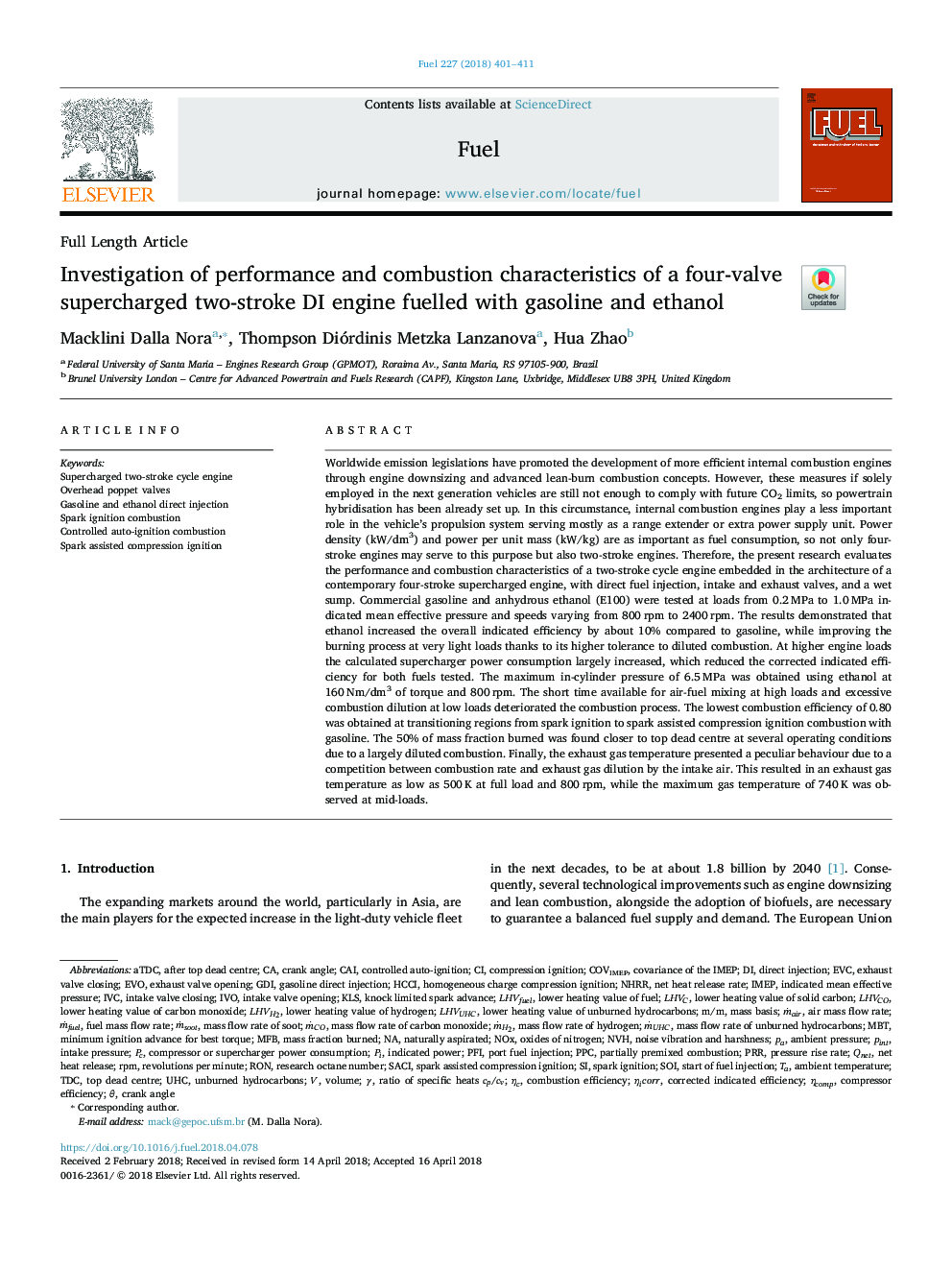| کد مقاله | کد نشریه | سال انتشار | مقاله انگلیسی | نسخه تمام متن |
|---|---|---|---|---|
| 6630832 | 1424937 | 2018 | 11 صفحه PDF | دانلود رایگان |
عنوان انگلیسی مقاله ISI
Investigation of performance and combustion characteristics of a four-valve supercharged two-stroke DI engine fuelled with gasoline and ethanol
دانلود مقاله + سفارش ترجمه
دانلود مقاله ISI انگلیسی
رایگان برای ایرانیان
کلمات کلیدی
MFBKnock Limited Spark AdvanceCOVimepηcIVOnaturally aspiratedKLSEVCNVHIVCUHCPRRRPMPPCIMEPPFISOIaTDCGDIHCCICAITDCMBTNOx - NOXPartially premixed combustion - احتراق به طور جزئی از پیش مخلوط شدهcompression ignition - احتراق فشرده سازیEvo - اویResearch Octane Number - اکتان شماره تحقیقOxides of nitrogen - اکسید نیتروژنExhaust valve closing - بسته شدن دریچه خروجیintake valve closing - بسته شدن شیر ورودیAfter Top Dead Centre - بعد از مرده مردهport fuel injection - تزریق سوخت پورتdirect injection - تزریق مستقیمgasoline direct injection - تزریق مستقیم بنزینspark ignition - جرقه جرقهSpark assisted compression ignition - جرقه سوئیچ فشرده سازی را پشتیبانی می کندVolume - جلدExhaust valve opening - دریچه خروجی دریچه بازintake valve opening - دریچه ورودی بازAmbient temperature - دمای محیطCombustion efficiency - راندمان احتراقCompressor efficiency - راندمان کمپرسورRON - رونCrank Angle - زاویه میل لنگrevolutions per minute - سرعت در هر دقیقهHomogeneous Charge Compression Ignition - سوپاپ فشرده سازی همگنAmbient pressure - فشار محیطIntake pressure - فشار ورودیIndicated power - قدرت نشان داده شدهm/m - متر / مترTop dead centre - مرکز مرده بالاPressure rise rate - نرخ افزایش فشارIndicated mean effective pressure - نشان دهنده فشار متوسط موثر استUnburned hydrocarbons - هیدروکربنهای نشتیPint - پینتMass fraction burned - کسر جرم سوخته استControlled auto-ignition - کنترل خودکار اشاعهSACI - کیسه های
موضوعات مرتبط
مهندسی و علوم پایه
مهندسی شیمی
مهندسی شیمی (عمومی)
پیش نمایش صفحه اول مقاله

چکیده انگلیسی
Worldwide emission legislations have promoted the development of more efficient internal combustion engines through engine downsizing and advanced lean-burn combustion concepts. However, these measures if solely employed in the next generation vehicles are still not enough to comply with future CO2 limits, so powertrain hybridisation has been already set up. In this circumstance, internal combustion engines play a less important role in the vehicle's propulsion system serving mostly as a range extender or extra power supply unit. Power density (kW/dm3) and power per unit mass (kW/kg) are as important as fuel consumption, so not only four-stroke engines may serve to this purpose but also two-stroke engines. Therefore, the present research evaluates the performance and combustion characteristics of a two-stroke cycle engine embedded in the architecture of a contemporary four-stroke supercharged engine, with direct fuel injection, intake and exhaust valves, and a wet sump. Commercial gasoline and anhydrous ethanol (E100) were tested at loads from 0.2â¯MPa to 1.0â¯MPa indicated mean effective pressure and speeds varying from 800â¯rpm to 2400â¯rpm. The results demonstrated that ethanol increased the overall indicated efficiency by about 10% compared to gasoline, while improving the burning process at very light loads thanks to its higher tolerance to diluted combustion. At higher engine loads the calculated supercharger power consumption largely increased, which reduced the corrected indicated efficiency for both fuels tested. The maximum in-cylinder pressure of 6.5â¯MPa was obtained using ethanol at 160â¯Nm/dm3 of torque and 800â¯rpm. The short time available for air-fuel mixing at high loads and excessive combustion dilution at low loads deteriorated the combustion process. The lowest combustion efficiency of 0.80 was obtained at transitioning regions from spark ignition to spark assisted compression ignition combustion with gasoline. The 50% of mass fraction burned was found closer to top dead centre at several operating conditions due to a largely diluted combustion. Finally, the exhaust gas temperature presented a peculiar behaviour due to a competition between combustion rate and exhaust gas dilution by the intake air. This resulted in an exhaust gas temperature as low as 500â¯K at full load and 800â¯rpm, while the maximum gas temperature of 740â¯K was observed at mid-loads.
ناشر
Database: Elsevier - ScienceDirect (ساینس دایرکت)
Journal: Fuel - Volume 227, 1 September 2018, Pages 401-411
Journal: Fuel - Volume 227, 1 September 2018, Pages 401-411
نویسندگان
Macklini Dalla Nora, Thompson Diórdinis Metzka Lanzanova, Hua Zhao,